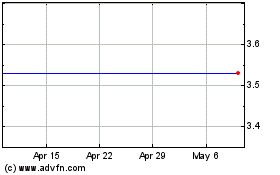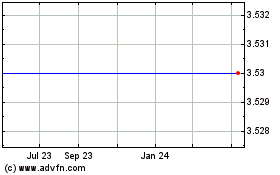FDA Grants Orphan Drug Designation to Kadmon’s KD025 for the Treatment of cGVHD
October 06 2017 - 8:11AM
Business Wire
Kadmon Holdings, Inc. (NYSE: KDMN) today announced that
the U.S. Food and Drug Administration (FDA) has granted orphan drug
designation to KD025, the Company’s Rho-associated coiled-coil
kinase (ROCK) inhibitor, for the treatment of chronic
graft-versus-host disease (cGVHD), a serious complication following
allogeneic bone marrow or stem cell transplantation.
KD025 is being studied in an ongoing Phase 2 clinical trial in
adults with steroid-dependent or steroid-refractory cGVHD and
active disease. The dose-finding study includes 48 patients divided
into three cohorts at different dose levels (KD025 200 mg QD, 200
mg BID and 400 mg QD), enrolled sequentially following a safety
assessment of each cohort. As previously reported, in a preliminary
analysis of data from the lowest-dose cohort (n=17), KD025 200 mg
QD demonstrated clinically meaningful responses, with no
drug-related serious adverse events recorded.
"cGVHD is a debilitating condition with few available therapies,
and many patients lack treatment options,” said Harlan W. Waksal,
M.D., President and CEO at Kadmon. “We are pleased with the
continued progress of KD025 in the ongoing clinical trial, and we
anticipate presenting additional data from the study toward the end
of this year.”
The FDA grants orphan designation to promote the development of
promising products for rare conditions affecting fewer than 200,000
U.S. patients annually. It qualifies a company for certain
financial benefits, including seven years of market exclusivity
following marketing approval, tax credits for clinical research
costs, eligibility for Orphan Product grants and the waiver of
certain administrative fees.
About Kadmon Holdings, Inc.
Kadmon Holdings, Inc. is a fully integrated biopharmaceutical
company focused on developing innovative products for significant
unmet medical needs. We have a product pipeline focused on
autoimmune and fibrotic diseases.
Forward-Looking Statements
This press release contains forward-looking statements. Such
statements may be preceded by the words “may,” “will,” “should,”
“expects,” “plans,” “anticipates,” “could,” “intends,” “targets,”
“projects,” “contemplates,” “believes,” “estimates,” “predicts,”
“potential” or “continue” or the negative of these terms or other
similar expressions. Forward-looking statements involve known and
unknown risks, uncertainties and other important factors that may
cause our actual results, performance or achievements to be
materially different from any future results, performance or
achievements expressed or implied by the forward-looking
statements. We believe that these factors include, but are not
limited to, (i) the initiation, timing, progress and results of our
preclinical studies and clinical trials, and our research and
development programs; (ii) our ability to advance product
candidates into, and successfully complete, clinical trials; (iii)
our reliance on the success of our product candidates; (iv) the
timing or likelihood of regulatory filings and approvals; (v) our
ability to expand our sales and marketing capabilities; (vi) the
commercialization of our product candidates, if approved; (vii) the
pricing and reimbursement of our product candidates, if approved;
(viii) the implementation of our business model, strategic plans
for our business, product candidates and technology; (ix) the scope
of protection we are able to establish and maintain for
intellectual property rights covering our product candidates and
technology; (x) our ability to operate our business without
infringing the intellectual property rights and proprietary
technology of third parties; (xi) costs associated with defending
intellectual property infringement, product liability
and other claims; (xii) regulatory developments in the United
States, Europe and other jurisdictions; (xiii) estimates of our
expenses, future revenues, capital requirements and our needs for
additional financing; (xiv) the potential benefits of strategic
collaboration agreements and our ability to enter into strategic
arrangements; (xv) our ability to maintain and establish
collaborations or obtain additional grant funding; (xvi) the rate
and degree of market acceptance of our product candidates; (xvii)
developments relating to our competitors and our industry,
including competing therapies; (xviii) our ability to effectively
manage our anticipated growth; (xix) our ability to attract and
retain qualified employees and key personnel; (xx) our ability to
achieve cost savings and other benefits from our efforts to
streamline our operations and to not harm our business with such
efforts; (xxi) the use of proceeds from our recent public
offerings; and/or (xxii) the potential benefits of
any of our product candidates being granted
orphan drug designation. More detailed information about
Kadmon and the risk factors that may affect the realization of
forward-looking statements is set forth in the Company's filings
with the U.S. Securities and Exchange Commission (“SEC”), including
the Company's Quarterly Report on Form 10-Q filed pursuant to
Section 13 of the Securities Exchange Act of 1934, as amended, with
the SEC on August 3, 2017. Investors and security holders are urged
to read these documents free of charge on the SEC's web site at
www.sec.gov. The Company assumes no obligation to publicly update
or revise its forward-looking statements as a result of new
information, future events or otherwise.
View source
version on businesswire.com: http://www.businesswire.com/news/home/20171006005394/en/
Kadmon Holdings, Inc.Ellen Tremaine, Investor
Relations646-490-2989ellen.tremaine@kadmon.comorMaeve
Conneighton212-600-1902maeve@argotpartners.com
Kadmon (NYSE:KDMN)
Historical Stock Chart
From Mar 2024 to Apr 2024

Kadmon (NYSE:KDMN)
Historical Stock Chart
From Apr 2023 to Apr 2024
